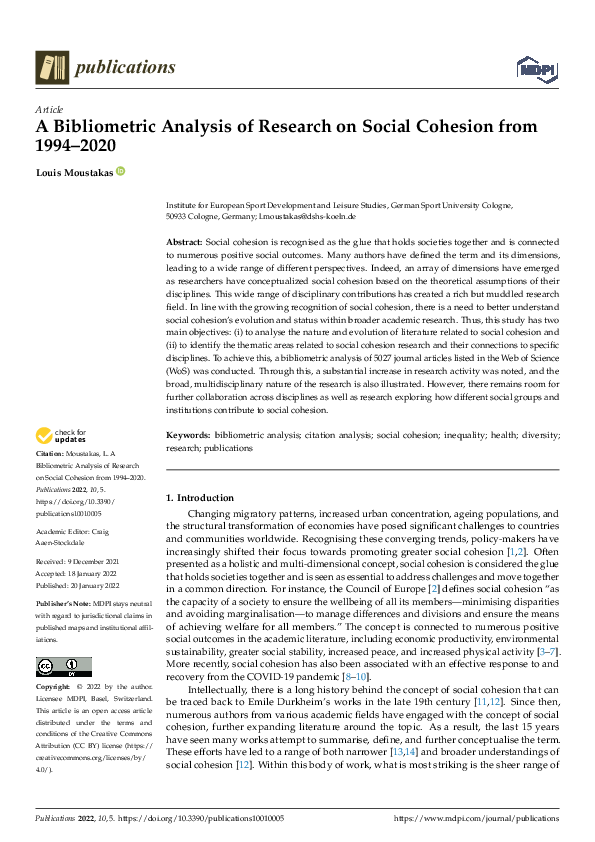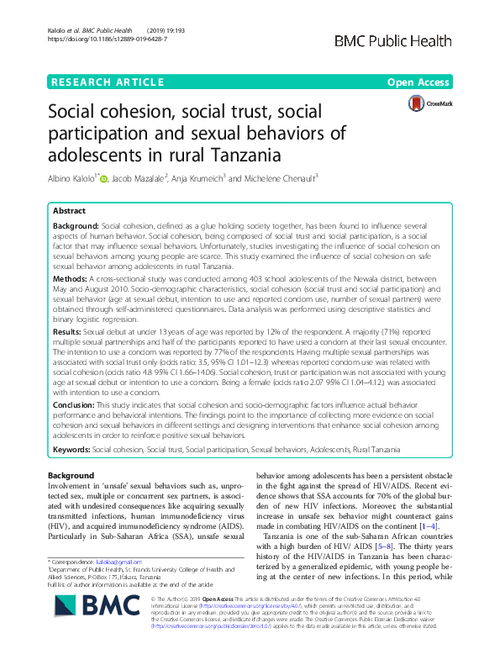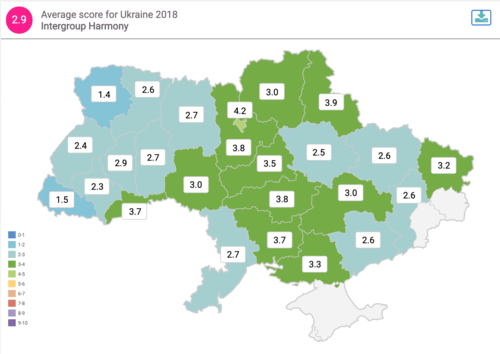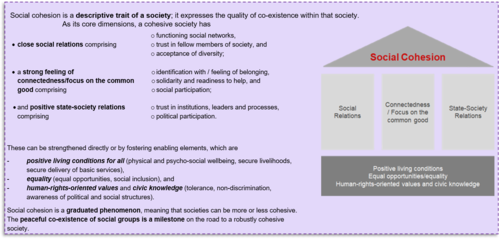A Bibliometric Analysis of Research on Social Cohesion from 1994–2020
Key facts
Intergroup relations
Identity/feeling of belonging
Participation
Equality/Inequality
Orientation towards the common good
Solidarity
Shared values
Cooperation
Tolerance
Connectedness
Political institutions & governance
Inequality
Concept & measurement
Summary
Social cohesion is recognised as the glue that holds societies together and is connected to numerous positive social outcomes. Many authors have defined the term and its dimensions, leading to a wide range of different perspectives. Indeed, an array of dimensions have emerged as researchers have conceptualized social cohesion based on the theoretical assumptions of their disciplines. This wide range of disciplinary contributions has created a rich but muddled research field. In line with the growing recognition of social cohesion, there is a need to better understand social cohesion’s evolution and status within broader academic research. Thus, this study has two main objectives: (i) to analyse the nature and evolution of literature related to social cohesion and (ii) to identify the thematic areas related to social cohesion research and their connections to specific disciplines. To achieve this, a bibliometric analysis of 5027 journal articles listed in the Web of Science (WoS) was conducted. Through this, a substantial increase in research activity was noted, and the broad, multidisciplinary nature of the research is also illustrated. However, there remains room for further collaboration across disciplines as well as research exploring how different social groups and institutions contribute to social cohesion.

Explore the hub further

Research Institute Social Cohesion (RISC) - Forschungsinstitut Gesellschaftlicher Zusammenhalt (FGZ)



